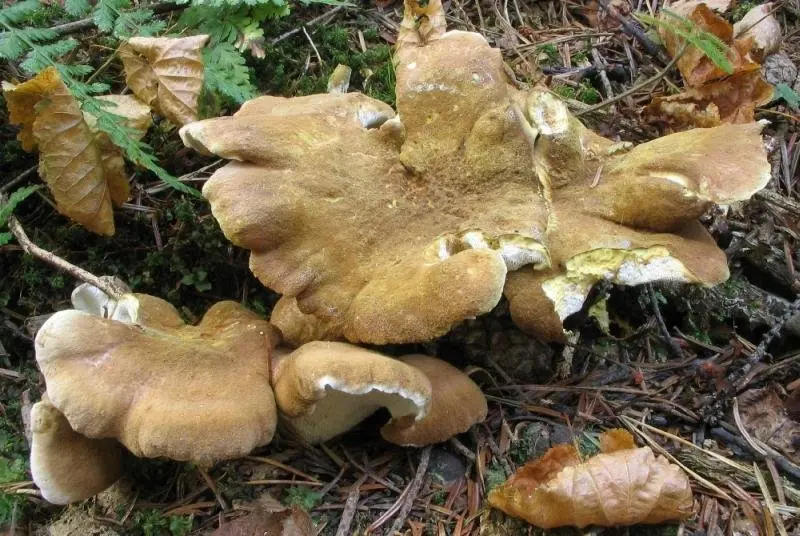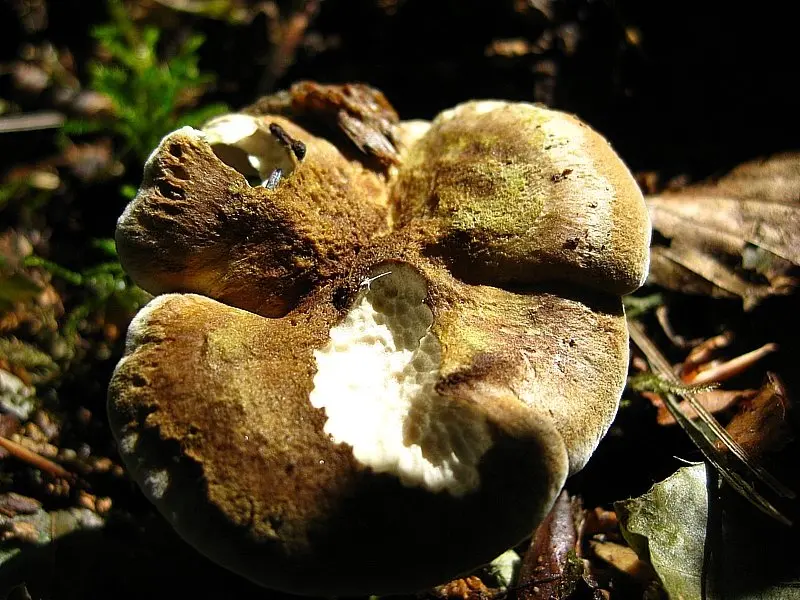Albatrellus comb (Crests of joy)
- Division: Basidiomycota (Basidiomycetes)
- Subdivision: Agaricomycotina (Agaricomycetes)
- Class: Agaricomycetes (Agaricomycetes)
- Subclass: Incertae sedis (of uncertain position)
- Order: Russulales (Russulovye)
- Family: Incertae sedis (of uncertain position)
- Rod: Joyful
- Type: Laeticutis cristata (Comb albatrellus)

Photo by: Zygmunt Augustowski
The basidiomas of this fungus are annuals. Sometimes solitary, but much more common that they grow together at the base, and the edges of the caps remain free.
Faced with Albatrellus comb, you can see a hat with a diameter of 2-12 cm and a thickness of 3-15 mm. The shape is round, semi-round and kidney-shaped. Often the mushrooms are irregular in shape and depressed towards the center. In old age and with dryness, they become very brittle.
The cap is thinly pubescent on top. Later, it begins to become more and more rough, breaks and scales become visible near the center. The surface of the cap has an olive-brown, yellowish-green, less often red-brown coating, with a greenish tinge on the edges.
The edge itself is very even and with large layers. The fabric of this representative of the Albatrellaceae is white, but towards the middle it becomes noticeably yellow, even lemon. Differs in fragility and fragility. The smell is slightly sour, the taste is not particularly sharp. Thickness up to 1 cm.
The tubules of this fungus are quite short. only 1-5 mm long. Are descending and white. Like all mushroom species, they change color when dried. It acquires a yellow, dirty yellow or red tint.
Pores tend to enlarge with age. Initially, they are small in size and round in shape. Placed with a density of 2-4 per 1mm. Over time, not only increase in size, but also change shape, look more angular. The edges become notched.
The leg is central, eccentric or almost lateral. It has a white color, often shades with marble, lemon, yellow or olive color. Leg length up to 10 cm and thickness up to 2 cm.
Albatrellus comb has a monomitic hyphal system. The tissues are wide with thin walls, the diameter varies (diameter ranges from 5 to 10 microns). They do not have buckles. The tubular hyphae are fairly sequential, thin-walled, and branched.
The basidia are club-shaped, and the spores are elliptical, spherical, smooth, hyaline. They have thickened walls and are drawn obliquely near the base.

They are found in deciduous and mixed forests, where there are oaks and beeches. Grows on soil sandy surface. Often found on roads that are overgrown with grass.
The geographical location of Albatrellus comb – Our Country (Krasnodar, Moscow, Siberia), Europe, East Asia and North America.
Eating: An edible mushroom, because it is rather hard and has an unpleasant taste.









